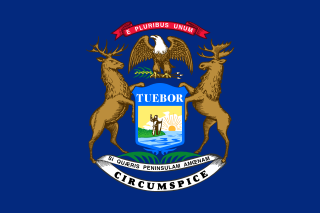
The 1st Michigan Sharpshooters Regiment was an infantry regiment that served in the Union Army's Army of the Potomac during the American Civil War.
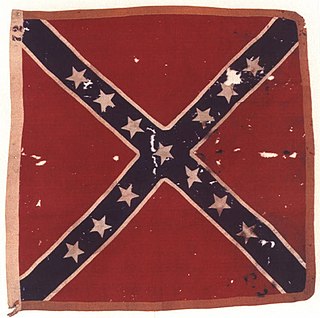
The 10th Alabama Infantry Regiment was an infantry regiment that served in the Confederate Army during the American Civil War.

The 8th Alabama Infantry Regiment was an infantry regiment that served in the Confederate Army during the American Civil War.
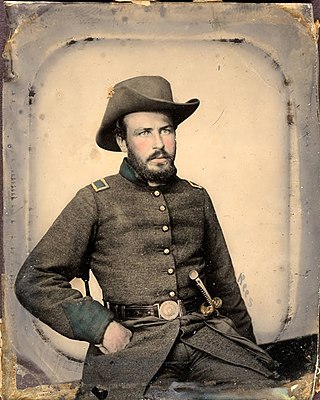
The 9th Alabama Infantry Regiment was an infantry regiment that served in the Confederate Army during the American Civil War.
The 14th Alabama Infantry Regiment was an infantry regiment that served in the Confederate Army during the American Civil War.
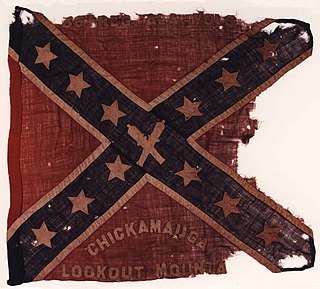
The 36th Alabama Infantry Regiment was an infantry regiment that served in the Confederate Army during the American Civil War.

The 38th Alabama Infantry Regiment was an infantry regiment that served in the Confederate Army during the American Civil War.
The 6th Kentucky Infantry Regiment was an infantry regiment that served in the Confederate States Army during the American Civil War. It was formed from Nelson, Barren, and surrounding counties. It was also part of the First Kentucky Brigade.
The 12th New Hampshire Infantry Regiment was an infantry regiment that served in the Union Army during the American Civil War. It was also a unit that existed for a time following the Revolutionary War.
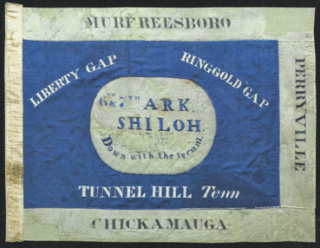
The 7th Arkansas Volunteer Infantry (1861−1865) was a Confederate Army infantry regiment during the American Civil War. Organized mainly from companies, including several prewar volunteer militia companies, raised in northeastern Arkansas, the regiment was among the first transferred to Confederate service, and spent virtually the entire war serving east of the Mississippi River. After the unit sustained heavy casualties in the Battle of Shiloh and the Kentucky Campaign, the unit spent most of the rest of the war field consolidated with the 6th Arkansas Infantry Regiment to form the 6th/7th Arkansas Infantry Regiment.
The Jeff. Davis Legion was a cavalry regiment of the Confederate States Army. Made up of companies from Mississippi, Alabama, and Georgia; it fought primarily in the Eastern Theater of the American Civil War. In 1865, it was reassigned to the Army of Tennessee, surrendering at Greensboro, N.C.

Theodore Washington Brevard Jr. was best known for having served as a military officer in the Confederate States Army. During his tenure with the Confederate army, he eventually reached the rank of Brigadier-General. Brevard was captured by the forces of General George Custer and imprisoned at Johnson's Island. He later died in 1882.
The 1st Missouri Infantry was an infantry regiment that served in the Confederate States Army during the American Civil War. Originally commanded by Colonel John S. Bowen, the regiment fought at the Battle of Shiloh, where it was engaged near the Peach Orchard on April 6, 1862. On April 7, during the Union counterattacks at Shiloh, the regiment was instrumental in preventing the Washington Artillery from being captured. The regiment was next engaged at the Second Battle of Corinth, where it outflanked several Union positions. On the second day at Corinth, the regiment was only minimally engaged. On November 7, the 1st Missouri Infantry was combined with the 4th Missouri Infantry to form the 1st and 4th Missouri Infantry (Consolidated), as a result of heavy battle losses in both regiments.
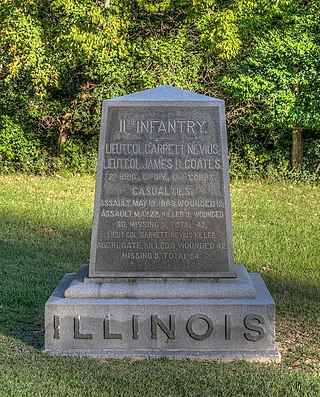
The 11th Regiment Illinois Volunteer Infantry was an infantry regiment from Illinois that served in the Union Army during the American Civil War. In April 1861, it was formed as a three-month volunteer unit, and in July 1861 it was reorganized as a three-year unit, in which role it served until the end of the war. Two of its commanding officers were promoted to brigadier general and led major units during the war. In its first major action at Fort Donelson the regiment suffered terrible losses. The 11th Illinois also fought at Shiloh, Riggins Hill, Vicksburg, First Yazoo City, Second Yazoo City, and Fort Blakely. In April 1863, the 109th Illinois Infantry Regiment was disbanded and its enlisted men transferred into the 11th Illinois. The regiment was mustered out of service in July 1865.

The 32nd Texas Cavalry Regiment, sometimes incorrectly named Andrews's 15th Texas Cavalry Regiment, was a unit of volunteer cavalry mustered into the Confederate States Army in May 1862 and which fought during the American Civil War. The regiment was formed around companies from Richard Phillip Crump's 1st Texas Cavalry Battalion which fought in Indian Territory and at Pea Ridge. Many of the soldiers died of disease in the unhealthy camps near Corinth, Mississippi. The cavalrymen were dismounted in July 1862 and served as infantry for the rest of the war. The regiment fought at Richmond, Ky., Stones River, and Chickamauga in 1862–1863, in the Meridian and Atlanta campaigns and at Nashville in 1864, and at Spanish Fort and Fort Blakeley in 1865. The regiment's 58 surviving members surrendered to Federal forces on 9 May 1865.
The 2nd Missouri Infantry Regiment was an infantry regiment that served in the Confederate States Army during the American Civil War. Organized on January 16, 1862, the regiment first saw major action at the Battle of Pea Ridge on March 7 and 8, 1862. After Pea Ridge, the regiment was transferred across the Mississippi River, fighting in the Battle of Farmington, Mississippi on May 9. The unit missed the Battle of Iuka in September, but was heavily engaged at the Second Battle of Corinth on October 3 and 4. The regiment helped drive in a Union position on October 3. On October 4, the 2nd Missouri Infantry, along with the rest of Colonel Elijah Gates' brigade, captured a fortification known as Battery Powell, but were forced to retreat by Union reinforcements.
The 16th Missouri Infantry Regiment (also known as Jackman's Missouri Regiment, Caldwell's Missouri Regiment, and the 7th Missouri Infantry Regiment (Lewis')) was an infantry regiment that served in the Confederate States Army during the American Civil War. The regiment was formed from men recruited by Jeremiah V. Cockrell and Sidney D. Jackman during an expedition into Missouri in August 1862. Although the recruits fought at the Battle of Lone Jack on August 16, they were not officially mustered into Confederate service until August 31. The regiment fought at the Battle of Prairie Grove on December 7. In May 1863, the regiment was designated the 7th Missouri Infantry Regiment, although this designation was changed to the 16th Missouri Infantry Regiment in December. On July 4, the regiment fought at the Battle of Helena, suffering heavy casualties. The unit then spent time building fortifications at Little Rock, Arkansas, before leaving the town in September. The 16th Missouri then fought at the Battle of Pleasant Hill on April 9, 1864, and at the Battle of Jenkins' Ferry on April 30. On June 8, 1865, the men of the regiment were paroled and sent back to Missouri via steamboat. More men died while serving in the 16th Missouri Infantry Regiment than died in any other Missouri unit serving in the Confederate States Army.
The 3rd Missouri Infantry Regiment served in the Confederate States Army during the American Civil War. The infantry regiment was officially mustered into service on January 17, 1862. It fought at the Battle of Pea Ridge in Arkansas in March before being transferred across the Mississippi River. While stationed at Corinth, Mississippi, the regiment played a minor role in the Battle of Farmington before the evacuation of the town. In September, the unit saw light action at the Battle of Iuka before being heavily engaged during the Second Battle of Corinth as the Confederates attempted to retake the town in October. In early 1863, the regiment was transferred to Grand Gulf, Mississippi, in order to strengthen the defenses of the Mississippi River at that point. At the Battle of Grand Gulf on April 29, the unit helped repulse a Union Navy attack against the Confederate defensive works. After elements of the Union Army of the Tennessee landed below Grand Gulf, the regiment fought in a delaying action at the Battle of Port Gibson on May 1.
The 11th Missouri Infantry Regiment (also known as Hunter's Missouri Infantry Regiment and 8th Missouri Infantry Regiment (Burns')) was an infantry regiment that served in the Confederate States Army during the American Civil War. The unit was mustered into Confederate service on August 31, 1862, although many of the men recruited for the regiment had already seen action at the Battle of Lone Jack. On December 7, the regiment fought at the Battle of Prairie Grove, where the regiment helped defeat Colonel William A. Weer's brigade. Prairie Grove was a Confederate defeat, and the 11th Missouri Infantry retreated into southern Arkansas. Later, the unit began moving against the garrison of Helena, Arkansas. On July 4, 1863, the regiment penetrated the Union works at the Battle of Helena, although its brigade was soon isolated and defeated.
The 2nd and 6th Missouri Infantry Regiment (Consolidated) was an infantry regiment that served in the Confederate States Army during the American Civil War. The regiment was formed on October 6, 1863, when the 2nd Missouri Infantry Regiment and the 6th Missouri Infantry Regiment were consolidated. The regiment first saw major action in the 1864 Atlanta campaign, fighting in the battles of Kennesaw Mountain and Peachtree Creek, the Siege of Atlanta, and several smaller actions. After the Confederates retreated from Atlanta, the regiment was part of a force that made an unsuccessful attack against a Union garrison during the Battle of Allatoona on October 5. The regiment then followed General John Bell Hood's Confederate Army of Tennessee into Tennessee, where it charged the Union works at the Battle of Franklin on November 30. At Franklin, the regiment suffered over 60 percent casualties, including the loss of many company commanders. After Franklin, the regiment was detached from the rest of the army to build fortifications, missing the Battle of Nashville. In March 1865, the regiment was transferred to Mobile, Alabama. On April 9, 1865, the regiment was captured at the Battle of Fort Blakely; the survivors of the regiment were paroled at Jackson, Mississippi in May after the Army of Tennessee surrendered.











